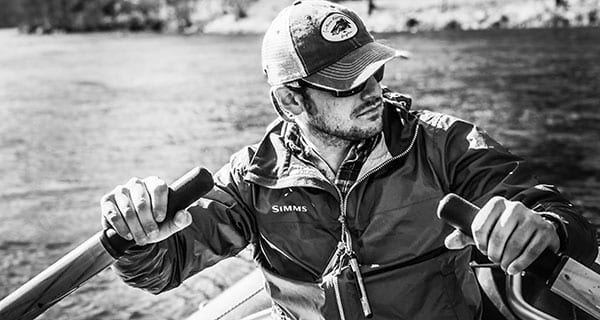I have often written about the inherent value and necessity of wild places, and the fish that are found within them, particularly for us anglers. Whether it’s a powerful whitewater gorge with steep cliff sides towering above the rapids or a tiny speck stream one could jump across: both are equally as necessary in relation to the health of the ecosystem, as well as for our own mental stability. These are places that I keep tight-lipped about. Where the fishing is still as good as it was when I was a kid, and the landscape only changed by the natural progression of time rather than by human progress. I keep these places to myself as a way to hopefully preserve them so that I, and others who might genuinely appreciate the ever-dwindling amount of wilderness left in Western North Carolina, can find solace, and tranquility.
Keeping your fishing spots secret isn’t a new thing. I can remember that being one of the most fundamental lessons that I was taught growing up trout fishing in Western North Carolina. One older gentleman in particular confided in me that he made up names of creeks so that when people asked, they could never find it. My favorite name place of his was “The Left Hand Fork of the Right Branch of Little Pigeon Ass Creek” or something to that effect.
It should also be noted that their secrecy, as well as my own, is not out of selfish intent but rather as a way to conserve the land as it once was, where the thickets of rhododendron and stands of birch and hemlock are left unscathed by summer developments or tourist traps. Those old timers understood that not everyone could appreciate a wild trout stream with the same amount of dignity and respect as they could. You could compare a trout stream almost as a church to God himself: a quiet place of prayer and peacefulness where anymore than three people in communion with one another is overcrowded. These secret, if not sacred, places that I keep to myself are out of this same necessity for communion with God, nature, and the wild trout found within them.
More conservation groups are also waking up to the idea of keeping places secret as an important tool of protecting wild places from being trampled. Leave No Trace just recently updated their minimal use practices to include not geo-tagging or hash-tagging fragile ecosystems on social media in order to prevent places from getting destroyed just from over-exposure alone. This notion of keeping some streams under the radar has opened up a Pandora’s box for me as a professional guide. Do I want people to experience the same fulfillments that I have whenever I fish? Absolutely. Do I ever tell anyone or guide on my secret spots?
Absolutely not.
While my job as a guide is to teach and lead people in the right direction when it comes to fishing, the other side of that is to also help ensure and protect places from overcrowding and under-appreciation. No amount of guiding prestige or money is worth destroying a place that is ever more special in both angling and ecologic significance.
I hope that you, the person reading this, will find that secret place to cast a line out. Somewhere that is tranquil and quiet, so that you can experience the wonder of nature and the true spirit of fishing while we still have these places around us. If you find one of mine, you’re more than welcome on it under the premise that you can appreciate the place even more than myself. I hope to see you out there, and I hope you’ll keep it secret.
Ethan Hollifield is an Environmental/Physical Science Teacher and is also a guide for Southern Appalachian Anglers.
